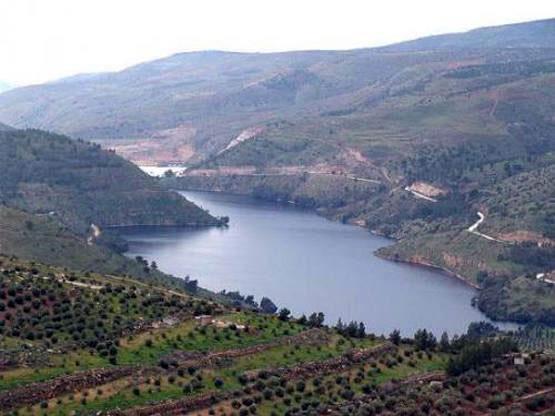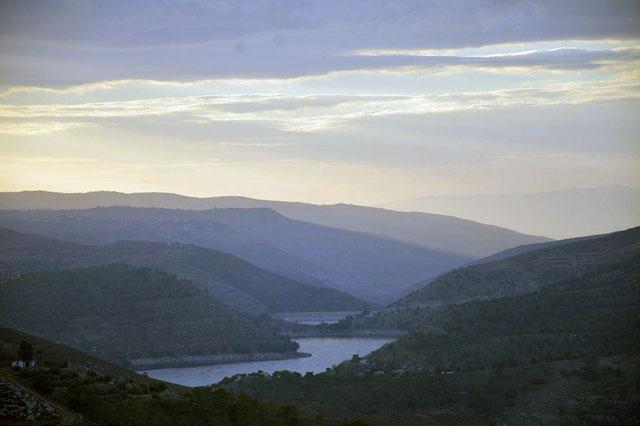You are here
'Weekend rain channels over 14m cubic metres of water into dams'
By Hana Namrouqa - Dec 28,2019 - Last updated at Dec 28,2019

In this undated photo, an aeriel view of the King Talal Dam in Jerash, some 50km north of Amman, can be seen (Photo courtesy of the Ministry of Water and Irrigation)
AMMAN — The country's 15 major dams now hold third of their total storage capacity of 336.4 million cubic metres (mcm), Water Ministry officials said on Saturday, indicating that the weekend rainfall dispelled fears of a dry rainy season.
Rain over the weekend channelled over 14 million cubic metres (mcm) of water into the country’s major dams, Minister of Water and Irrigation Raed Abul Saud said on Saturday in a statement to the press.
“By Saturday morning, storage at the dams reached 101.5mcm, which is 30 per cent of the dams' total capacity,” Abul Saud said, noting that the dams’ current storage capacity is almost equivalent to that of the same period last year.
During this time last year, the dams held 104mcm or 31 per cent of their capacity, according to the minister.
A cold air mass and a depression affected the country on Wednesday, bringing strong winds and heavy rain between Thursday and Saturday to most parts of the country. The impact of the combined weather condition tapered off on Saturday afternoon.
The weekend precipitation raised the overall rain that the country received since the start of the wet season to 3047 mcm, which constitutes 37.2 per cent of Jordan’s long-term annual average of rainfall of 8.1 billion cubic metres, according to the ministry.
The ministry’s figures showed that the central region, particularly the capital, received the highest precipitation, receiving 566mcm of rain during the recent weather condition.
Ministry’s spokesperson Omar Salameh underscored that the recent dispelled fears of a dry season, expressing hope for more rain as the country experiences the marbaniyeh.
During marbaniyeh, the local name given to the 40 coldest days of winter, the country typically witnesses several depressions.
Multiple depressions, very cold weather and cold and dry easterly winds are characteristics of marbaniyeh, during which several frost spells take hold of the country due to the around-zero temperatures and very cold easterly winds.
During marbaniyeh, which ends on January 30, the Kingdom usually gets 30 per cent of its long-term annual average rainfall.
Related Articles
AMMAN — The current dearth of rain is taking its toll on the Kingdom’s main dams, according to a government official, who said that storage
AMMAN — Saturday marked the winter solstice in the northern hemisphere and the start of marbaniyeh in Jordan, the 40 coldest days of winter,
AMMAN — The Kingdom on Sunday entered the last 50 days of winter, locally referred to as "khamsiniyeh", according to a Jordan Meteorological

















